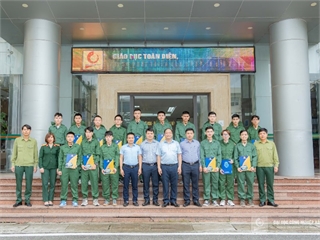Effect of different technologies on combustion and emissions of the diesel engine fuelled with biodiesel: A review
Bài báo được thực hiện bởi nhóm tác giả: Jiaqiang Ea, d, *, Minhhieu Phama, b, d, *, D. Zhaoc, *, Yuanwang Deng, DucHieu Le, Wei Zuo, Hao Zhu, Teng Liu, Qingguo Peng, Zhiqing Zhang. Phòng thí nghiệm nghiên cứu thiết kế và chế tạo thân vỏ ôtô trường Đại học Hồ Nam Trung Quốc, Khoa Công nghệ ô tô Trường ĐHCNHN. Được đăng tải trên tạp chí, Renewable and Sustainable Energy Reviews tháng 05 năm 2017
Abstract: Due to the shortage of the conventional fossil fuels and air pollution from combustion, new, sustainable and cleaner fuel resources are urgently required. Biodiesel has been introduced as a potential and alternative fuel for years. Biodiesel can be produced from different sources such as vegetable oils, animal fat, waste oil, etc. All of them are renewable and do not affect the food security. When biodiesel is used as a fuel resource for diesel engines, the performance and emission characteristics such as brake thermal efficiency (BTE), brake specific fuel consumption (BSFC) and brake power are almost maintained while hydrocarbons (HC), carbon monoxide (CO), and particulate matter (PM) is decreased significantly. However, higher NOx concentration is observed. This disadvantage of using biodiesel or biofuels in general is improved in recent years. The purpose of this work is to do a comprehensive investigation of different approaches applying to biodiesel fuelled engine like biodiesel additives, exhaust gas recirculation (EGR), water injection (WI), emulsion technology (ET), injection strategy modification, simultaneous technologies (ST), combustion chamber geometry modificationand low temperature combustion (LTC) mode. By the way, the impacts of these technologies on engine performance and emission characteristics are summarized. Upon the comparison, using LTC mode is more efficient and feasible than the others. It can reduce both NOx and PM emissions simultaneously by up to 95% and 98%, respectively, while engine performance is slightly reduced. Looking inside the LTC mode, the most efficient model is the reactivity controlled compression ignition (RCCI) combustion system. Applying RCCI combustion model might lead to the increase of CO and HC emissions, but this issue can be easily solved by using some available technologies.
Key words: Biodiesel; Combustion and emissions; Diesel engine; Particulate matter
Nội dung chi tiết: tải về tại đây
-
Thứ Ba, 08:56 07/11/2017










![[LIVESTREAM] Hiểu đúng ngành, chọn đúng nghề - Tư vấn chuyên sâu nhóm ngành Điện, Điện tử](https://www.haui.edu.vn/media/84/m84969.jpg)
![[LIVESTREAM] Hiểu đúng ngành, chọn đúng nghề - Tư vấn chuyên sâu nhóm ngành Ngôn ngữ, Văn hóa, Du lịch & Khách sạn](https://www.haui.edu.vn/media/84/m84967.jpg)